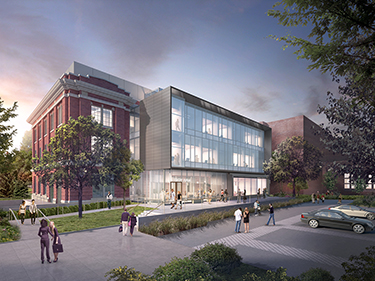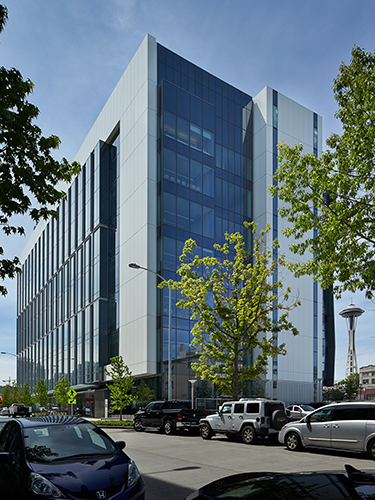|
Subscribe / Renew |
|
|
Contact Us |
|
| ► Subscribe to our Free Weekly Newsletter | |
| home | Welcome, sign in or click here to subscribe. | login |
Construction
| |
 |
November 19, 2015
UW, WSU find ways to do more with less
Perkins+Will

Gianopoulos
|
Across the Pacific Northwest, institutions of higher learning are turning to alternative funding and delivery models to develop their large- and small-scale design and construction projects. Institutions like the University of Washington and Washington State University are seeing the benefits: closer team collaborations, marked cost savings, and on-time or even early delivery.
A public-private model
Within the higher-education sector, a progressive public-private partnership (P3) model offers institutions unique contractual relationships with private sector companies to develop revenue-generating projects such as student housing, student unions, academic research laboratories and on-campus medical centers.
With P3s, institutions benefit from private sector development tools, which generally mean a more efficient design and permitting process, a faster delivery schedule and overall lower costs. Through the P3 model, public institutions develop a well-designed and customized facility as an annual lease rather than the large capital outlay typically required.
The University of Washington turned to P3 as an alternative project delivery model to develop its two-block biomedical research campus in South Lake Union. The project includes five buildings and multiple biomedical research laboratories.
Vulcan Real Estate served as the developer, leasing land to a special-purpose not-for-profit entity created by the National Development Council’s Housing and Economic Development Corp., on behalf of the UW.
To pay for the campus, two unique forms of tax-exempt revenue bonds were used by the NDC entity. The bonds were backed by leases to the UW, supported by its general revenue and paid from its research grants and other sources.
When the bonds are paid off, both the facilities and ground lease will transfer at no cost from the NDC entity to the UW.
Currently the UW Medicine Lake Union Phase 3.2 research building is in design development, and the entire project will be completed in three and a half years from the start of programming, compared with a norm of five to six years on the main campus for conventional projects. The other UW Medicine campus structures were also completed within three and a half years.
Quicker delivery
As a result of funding reductions and delays for design and construction, institutions of higher learning are using design-build to develop projects.
As a model, design-build is designed to deliver projects more quickly. It also requires a closer collaboration among owners, designers and contractors than traditional models. In design-build, risk is shared and carried by those best suited to manage that risk, whether it is the contractor, designer or owner.
The model is also designed to save time and money in the selection of the designer, contractor and subconsultants, who are all appointed at the beginning of the project.
Washington State University turned to design-build to implement its first major remodel, Troy Hall, with the team of Lydig Construction and the Seattle office of Perkins+Will.
WSU was looking for an integrated project approach that was highly collaborative and offered the most value to the project-delivery process. Under current Washington laws, design-build provides the closest contract procurement and contract vehicle for that approach.
The Troy Hall project involves the preservation and restoration of the historic WSU campus building. Currently in design development, the design-build process to date has allowed for creative solutions for the reuse of the existing exterior, structural solutions for the laboratory use and space layout solutions.
As more institutions of higher learning face funding shortfalls or delays, unorthodox funding and delivery models such as P3 and design-build have proven solid alternatives. P3 and design-build have track records for producing high-quality buildings, often with less cost and less time than traditional models — fostering more collaborative teams and creative solutions along the way.
Anthony Gianopoulos is a principal with Perkins+Will’s Seattle office.
Other Stories:
- No detail is too small for UW nanoengineering lab
- How crews used BIM to cope with unwelcome surprises at Denny Hall
- Classroom of the future takes shape at WSU— and it's round
- New UW dorms revive a long-lost urban pathway
- WSU’s Paccar building houses 5 R&D labs
- WSU’s wine center aims to train next generation of winemakers
- UW: Top 10 capital projects
- WSU: Top 10 capital projects




